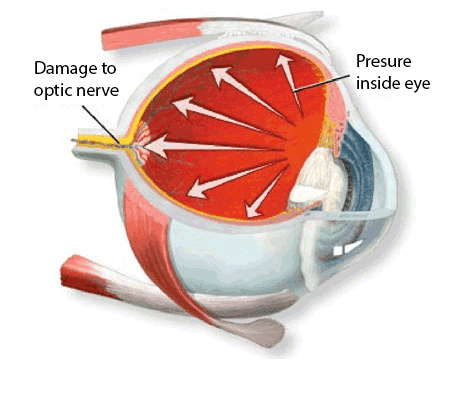According to the American Academy of Ophthalmology, more than 3 million Americans have glaucoma, the second leading cause of blindness. Known as the silent thief of sight, glaucoma is an asymptomatic eye condition that develops from a number of different causes. Although there is no cure for glaucoma, early diagnosis and treatment with a board certified ophthalmologist, like Dr. Linda Vu, is critical in prolonging vision.
What Is Glaucoma?
Glaucoma refers to a group of eye disorders that cause damage to the optic nerve that is responsible for transmitting light from the retina to the brain. There are two main types of glaucoma. Open-angle, the most common form of glaucoma, is a result of fluid buildup in the eye, which in turn increases intraocular pressure (IOP) and damages the optic nerve. This form of glaucoma happens gradually and typically begins with no symptoms. If left untreated, glaucoma can lead to irreversible visual damage and even blindness.
Angle-closure glaucoma occurs when something obstructs the eye’s drainage channel, increasing IOP. This form of glaucoma occurs suddenly and causes symptoms like eye pain, haloes around lights, intense eye pain, blurry vision and nausea or vomiting. If you experience any of these symptoms, you should seek medical attention immediately to avoid permanent damage.
Common Risk Factors of Glaucoma
Anyone can get glaucoma, however, research shows individuals with a family history of the condition, are over the age of 40 or have diabetes, have a higher risk of developing glaucoma. Several studies have also found that African American have an increased risk of glaucoma. If you are at heightened risk, Dr. Vu recommends you get your eyes examined regularly.
Evaluating & Treating Glaucoma
Because glaucoma often begins without any visible symptoms, many people do not know they have the condition. For this reason, regular eye exams with an eye doctor is critical in catching and treating the disease early on. During a comprehensive eye exam, our doctors at Linda Vision will screen for this and other medical conditions of the eyes.
The goal of glaucoma treatment is to slow down the progression of the disease. In some cases, prescription eye drops are effective in lowering IOP. However, if eye drops are not effective, surgical intervention may be necessary.
To learn more about glaucoma, including treatment options, please schedule an appointment with Linda Vision by calling (626) 382-2020 today.

